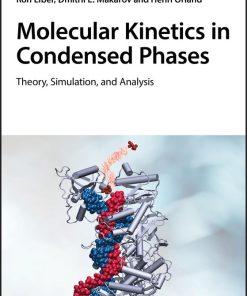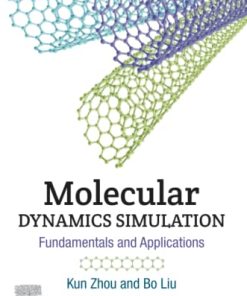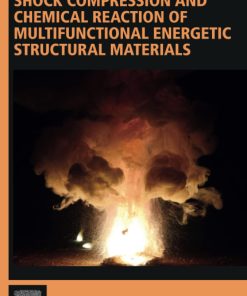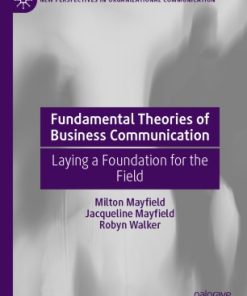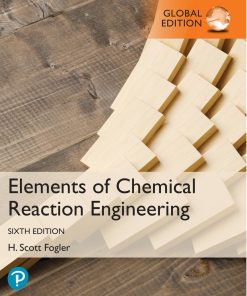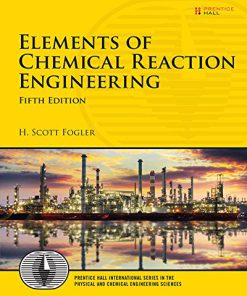Theories of Molecular Reaction Dynamics The Microscopic Foundation of Chemical Kinetics 2nd Edition by Niels Henriksen, Flemming Hansen 0192527202 9780192527202
$50.00 Original price was: $50.00.$25.00Current price is: $25.00.
Theories of Molecular Reaction Dynamics: The Microscopic Foundation of Chemical Kinetics 2nd Edition by Niels E. Henriksen, Flemming Y. Hansen – Ebook PDF Instant Download/DeliveryISBN: 0192527202, 9780192527202
Full download Theories of Molecular Reaction Dynamics: The Microscopic Foundation of Chemical Kinetics 2nd Edition after payment.
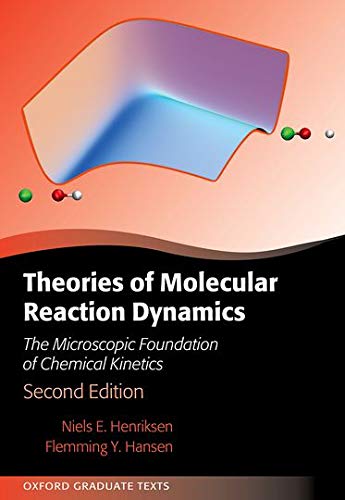
Product details:
ISBN-10 : 0192527202
ISBN-13 : 9780192527202
Author : Niels E. Henriksen, Flemming Y. Hansen
This book deals with a central topic at the interface of chemistry and physics–the understanding of how the transformation of matter takes place at the atomic level. Building on the laws of physics, the book focuses on the theoretical framework for predicting the outcome of chemical reactions. The style is highly systematic with attention to basic concepts and clarity of presentation. The emphasis is on concepts and insights obtained via analytical theories rather than computational and numerical aspects. Molecular reaction dynamics is about the detailed atomic-level description of chemical reactions. Based on quantum mechanics and statistical mechanics, the dynamics of uni- and bi-molecular elementary reactions are described. The book features a comprehensive presentation of transition-state theory which plays an important role in practice, and a detailed discussion of basic theories of reaction dynamics in condensed phases. Examples and end-of-chapter problems are included in order to illustrate the theory and its connection to chemical problems. The second edition includes updated descriptions of adiabatic and non-adiabatic electron-nuclear dynamics, an expanded discussion of classical two-body models of chemical reactions, including the Langevin model, additional material on quantum tunnelling and its implementation in Transition-State Theory, and a more thorough description of the Born and Onsager models for solvation.
Theories of Molecular Reaction Dynamics: The Microscopic Foundation of Chemical Kinetics 2nd Table of contents:
1. Introduction
1.1 Nuclear Dynamics: The Schrödinger Equation
1.2 Thermal Equilibrium: The Boltzmann Distribution
Further reading/references
Problems
Part I. Gas-Phase Dynamics
2. From Microscopic to Macroscopic Descriptions
2.1 Cross-Sections and Rate Constants
2.2 Thermal Equilibrium
2.2.1 Principle of detailed balance
Further reading/references
Problems
3. Potential Energy Surfaces
3.1 The General Topology of Potential Energy Surfaces
3.2 Molecular Electronic Energies, Analytical Results
3.2.1 The variational principle
3.2.2 Chemical bonding in H+2 and H2
3.2.3 H+H2→H2 +H, the London equation
3.2.4 A semi-empirical method: the LEPS surface
Further reading/references
Problems
4. Bimolecular Reactions, Dynamics of Collisions
4.1 Quasi-Classical Dynamics
4.1.1 Cross-sections from classical mechanics
4.1.2 Simple models for chemical reactions
4.1.2.1 Model 1, the collision frequency
4.1.2.2 Model 2, the energy threshold
4.1.3 Two-body classical scattering
4.1.3.1 Two-body models of chemical reactions
4.1.3.2 Two-body scattering, the deflection angle, and cross-section
4.1.3.3 Scattering angles and differential cross-section in various frames
4.1.4 Many-body classical scattering
4.1.4.1 Different formulations of Newton’s equation of motion
4.1.4.2 Quasi-classical trajectory calculations
4.1.4.3 Initial coordinates and momenta
4.1.4.4 Sampling of initial conditions
4.1.4.5 Analysis of the trajectory results
4.2 Quantum Dynamics
4.2.1 Gaussian wave packet dynamics
4.2.1.1 Momentum-space representation
4.2.2 Elements of quantum scattering theory
4.2.2.1 Elastic two-body scattering
4.2.2.2 Reactive scattering
4.2.3 Non-adiabatic dynamics
Further reading/references
Problems
5. Rate Constants, Reactive Flux
5.1 Classical Dynamics
5.1.1 Flow of system points in phase space
5.1.1.1 Rates and rate constants
5.1.1.2 Specific dividing surfaces
5.1.2 An exact classical expression for the rate constant
5.2 Quantum Dynamics
5.2.1 One degree of freedom
5.2.2 The general case
Further reading/references
Problems
6. Bimolecular Reactions, Transition-State Theory
6.1 Standard Derivation
6.2 A Dynamical Correction Factor
6.3 Systematic Derivation
6.4 Barrier Crossing, Quantum Mechanics
6.4.1 Tunneling through one-dimensional barriers
6.4.2 Tunneling correction factor
6.5 Applications of Transition-State Theory
6.6 Thermodynamic Formulation
Further reading/references
Problems
7. Unimolecular Reactions
7.1 True and Apparent Unimolecular Reactions
7.1.1 True unimolecular reactions
7.1.2 Apparent unimolecular reactions
7.2 Dynamical Theories
7.2.1 Classical mechanics, Slater theory
7.2.2 Quantum mechanical theory
7.2.2.1 True unimolecular reactions
7.2.2.2 Apparent unimolecular reactions
7.3 Statistical Theories
7.3.1 The RRK theory
7.3.2 The RRKM theory
7.3.2.1 The microcanonical rate constant k(E)
7.3.2.2 The canonical rate constant k(T)
7.4 Collisional Energy Transfer and Reaction
7.4.1 Inelastic collisions and reaction
7.4.2 Inelastic collisions and reaction, Lindemann mechanism
7.5 Detection and Control of Chemical Dynamics
7.5.1 Detection of chemical dynamics
7.5.2 Control of chemical dynamics
7.5.2.1 Incoherent excitation
7.5.2.2 Coherent excitation
Further reading/references
Problems
8. Microscopic Interpretation of Arrhenius Parameters
8.1 The Pre-Exponential Factor
8.1.1 Unimolecular reactions
8.1.2 Bimolecular reactions
8.2 The Activation Energy
8.2.1 Activation energy and detailed balance
8.2.2 Activation energy and transition-state theory
8.2.3 Activation energy and quantum tunneling
Problems
Part II. Condensed-Phase Dynamics
9. Introduction to Condensed-Phase Dynamics
9.1 Solvation: The Born and Onsager Models
9.1.1 The Born model for ions
9.1.2 The Onsager model
9.1.2.1 A non-polarizable molecule
9.1.2.2 A polarizable molecule
9.1.3 Quantum mechanical energy, potential energy surface
9.2 Diffusion and Bimolecular Reactions
9.2.1 Introduction, a macroscopic description
9.2.2 Fick’s second law of diffusion and chemical reaction
9.2.3 Stochastic description of diffusion and chemical reaction
Further reading/references
Problems
10. Static Solvent Effects, Transition-State Theory
10.1 An Introduction to the Potential of Mean Force
10.2 Transition-State Theory and the Potential of Mean Force
10.2.1 Solvent-perturbed activated complex
10.2.2 Unperturbed activated complex
10.2.2.1 A special case: reactants without internal degrees of freedom
Further reading/references
Problems
11. Dynamic Solvent Effects: Kramers Theory and Beyond
11.1 Brownian Motion, the Langevin Equation
11.2 Kramers Theory for the Rate Constant
11.3 Beyond Kramers: Grote–Hynes Theory and MD
11.3.1 Generalized Langevin equation
11.3.1.1 Derivation of the GLE for a harmonic system
11.3.2 The Grote–Hynes equation
11.3.2.1 Discussion of the Grote–Hynes equation
People also search for Theories of Molecular Reaction Dynamics: The Microscopic Foundation of Chemical Kinetics 2nd:
molecular dynamics theory
types of molecular dynamics
molecular dynamics reaction
molecular reaction dynamics pdf
theories of molecular reaction dynamics pdf
Tags: Theories, Molecular Reaction, Dynamics, The Microscopic, Foundation, Niels Henriksen, Flemming Hansen
You may also like…
Biology and other natural sciences
Molecular kinetics in condensed phases: theory, simulation, and analysis First Edition Elber
Physics - Others
Engineering - Industrial Engineering & Materials Science
Business & Economics - Management & Leadership
Fundamental Theories of Business Communication: Laying a Foundation for the Field 1st Edition
Chemistry - Technical & Industrial Chemistry
Elements of Chemical Reaction Engineering, Global Edition, 6th Edition H. Fogler
Science (General)
Chemistry - Physical Chemistry
The Thermodynamics of Phase and Reaction Equilibria 2nd Edition Ismail Tosun





